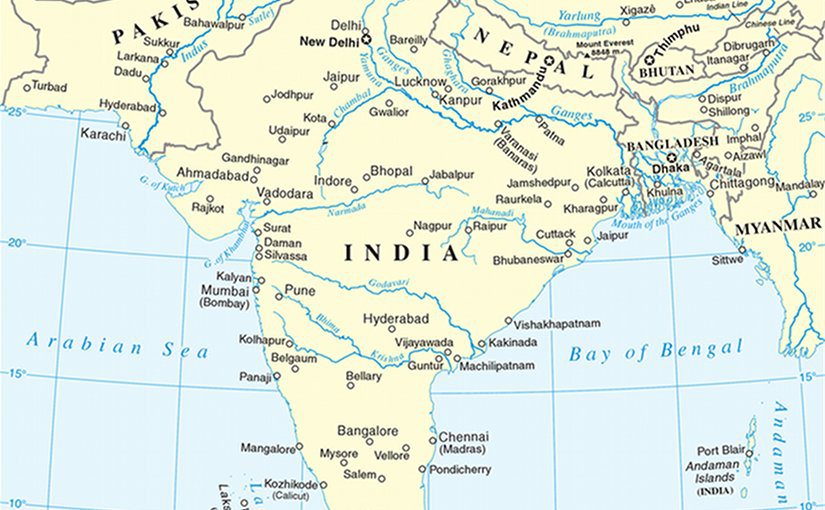By Surya Valliappan Krishna*
Recently, the Gurdaspur terror attack raised questions regarding collusion between Islamist groups such as Laskar-e-Toiba (LeT) and Sikh militant groups pushing for the revival of the Khalistan movement. Although, the idea of two forces with very little in common uniting to fight a common enemy seems like a really engaging narrative of Bollywood’s next 100 crore blockbuster, it actually is seen in the real world.
This isn’t the first time we’re seeing collusion between terrorist groups. Often groups with different aims and agendas unite to fight a common enemy. Coordination and support takes the form of training, logistics, intelligence weapons supply and actual operation. Groups also show remarkable capacity to learn from each other, for instance the LTTE (Liberation Tamil of Tigers Eelam) popular use of suicide bombing was adopted by Al-Qaeda and now groups from around the world.
During the latter half of the 20th century, the LTTE was working closely with a number of terrorist groups. LTTE was associated with Harakat-ul-Mujahideen, Abu Sayyaf Group and pro-Palestinian groups; the relationship was critical to weapons supply and training. In addition the LTTE has extended a hand to the Naxalite and Khalistan movements in India and swore to support national liberation movements around the world. In 2007 it was found that the LTTE has sold hundreds of Norwegian passports to Al-Qaeda.
We see this trend with terrorist groups in other parts of the world too. In some cases we’ve seen extremely powerful collusions and mergers among groups. The Hezbollah was actually a merger of a number of Shia militias with members from a number of different factions. Strategic alliances too are seen very often with Al-Qaeda and its affiliates in the region. With the Islamic State, we see that a number of groups around the world are joining its bandwagon and pledging allegiance, for instance Boko Haram and Jundullah. Given that these groups have some hold in their countries and Islamic State’s transnational network, financial and military might, attacks involving collusion between the Islamic State and its side-kicks are definitely on the cards.
Islamic State could potentially exploit home-grown terrorist groups in India; use groups such Indian Mujahideen (IM) and Students Islamic Movement of India (SIMI) as tools for its Indian challenge and South Asian agenda. These groups lack the kind of organization efficiency that the Islamic State can provide.
We also see that in certain cases, there is a sense of rivalry among terrorist groups. Although, turf wars are normally associated with intelligence agencies and bureaucratic frameworks, terrorist groups often emulate this. This is seen with Islamist groups, particular now with the Islamic State and Afghan Taliban. The Islamic State, which uses its propaganda magazine Dabiq, as a medium to denounce other Islamist groups, openly criticized the Afghan Taliban, its lack of activity and influence. Reports claims that the two groups had declared war on each other. In addition to this there is evidence to show that the Afghan Taliban has been discouraging its cadre from joining the Islamic State and warning the Islamic State against operating in Afghanistan. Turf wars among groups pose a problem in itself as civilian population is often a canvas for the expression of violent tendencies.
Collusion between groups does not always symbolize a collusion of ideologies; it is a merger of convenience and often nothing more. Co-operation among lethal forces is a threat to any government; a co-ordinated attack needs a co-ordinated response. Non-state groups exploit and escalate tensions between state forces. The only way to neutralize this hybrid threat is to de-politicise security issues and push for inter-governmental counter-terrorism cooperation.
India currently is working on what is calls as a ‘radicalisation blueprint’, keeping in line with the West. One can only hope that this has a ripple effect other countries in South Asia where the threat is equally imminent such as Pakistan, Bangladesh and Maldives. Any radicalisation or counter-extremism plan is unlikely to work if isolated from the international neighbourhood. While the state-wise radicalisation approach is commendable, what is needed is larger South Asian-level cooperation to counter Islamic State influence and the collusion between terror groups.
*Surya Valliappan Krishna is a postgraduate student at the Department of War Studies, Kings College London. He is a lead researcher on Mantraya’s ‘Islamic State in South Asia’ Project. He can be reached at suryavalliappan@gmail.com
Source: Eurasiareview









